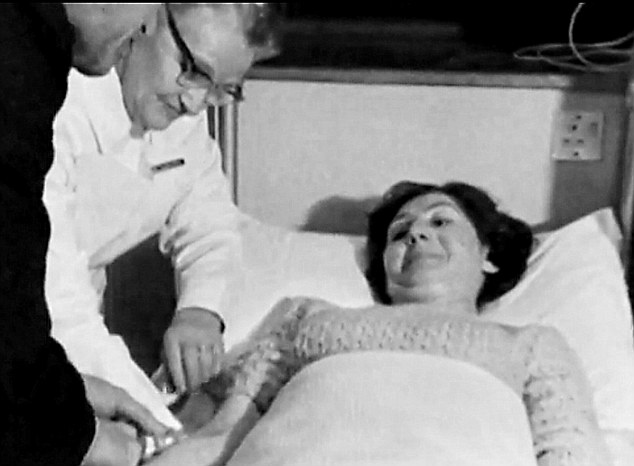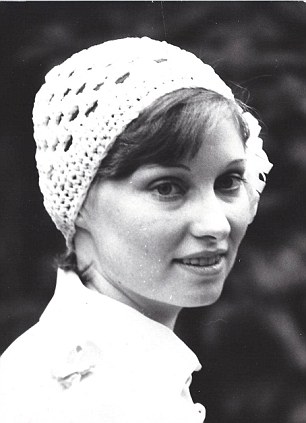Daily Mail
August 8, 2013

There are many horrors that Elizabeth Reed recalls from her time at London’s Royal Waterloo Hospital, but one in particular lingers in her mind. She describes a small, windowless room at the top of the red-brick Edwardian building, just lit by a night lamp on a nurse’s desk.
Six beds are jammed together. The deep breathing of women in a drug-induced sleep. The fetid stench of unwashed bodies.
‘It was like being buried alive,’ she says. ‘I was lying there in the dark, hour after hour, and couldn’t move. I wasn’t aware of my body, just my head in this darkness. You could hear people moving around and other people breathing and moaning.’
While Elizabeth is one of only a handful of women prepared to speak out, her story is not unique. Up to 500 women, suffering from conditions such as postnatal depression and anorexia, passed through the Royal Waterloo’s infamous Ward 5 before it shut 40 years ago.
Heavily drugged and subjected to horrendous levels of electro-convulsive therapy (ECT) and even lobotomies, the unluckiest were taken to the ‘Narcosis Room’, where they were put to sleep for weeks at a time.
Almost all teenage girls and women in their early 20s, they were treated as little more than guinea pigs by controversial psychiatrist William Sargant as he conducted a bizarre experiment to ‘repattern’ their brains and cure them of depression.
If all this sounds like the stuff of science-fiction horror, it is no coincidence a new psychological thriller, The Sleep Room, by clinical psychologist-turned-novelist F. R. Tallis, draws heavily on Sargant’s scandalous treatments.
But behind the fiction, questions remain about why the women of Ward 5 were subjected to such cruelty at an NHS hospital. Two of them, now in their 60s, spoke about their experiences to Femail this week.

‘It’s so easy to dismiss us,’ says Elizabeth, a 63-year-old grandmother and former marketing director from London. ‘It was a long time ago and we were psychiatric patients. Many of us were left with pieces of our memory missing.
‘We were not drooling maniacs, but if you’ve been put in a sleep room, then your memories are not going to be clear. I lost huge chunk of my past.’
Officially, the Department of Health says it no longer has records of Sargant’s work at the Royal Waterloo, affiliated to London’s St Thomas’s Hospital. However, Elizabeth has a copy of her referral letter from January 1973, stamped with the ominous words: ‘Admit to Ward 5.’ Notes reveal she was given a ‘course of narcosis’.
She had been diagnosed with ‘obsessional neurosis’ and, by her own admission, was very ill — depression compounded by a difficult childhood.
‘But many other women I have spoken to say they were suffering from milder forms of depression and anxiety,’ she says. ‘The treatment was completely out of proportion.’
She was admitted to the Royal Waterloo in spring 1973 when she was 22 and engaged to be married. After arriving on the 22-bed Ward 5, she was sedated and underwent ECT — sometimes every other day.
Women there were occasionally woken to be taken to the toilet or to be fed. ‘We were like zombies,’ says Elizabeth. ‘I couldn’t walk. I had to be lifted. Afterwards, they put you back to sleep again.
‘The worst time was when I started not to be asleep. I was awake, but couldn’t move or speak. It was torture, lying there for hours in the darkness.’
Sargant, a founding member of St Thomas’s department of psychological medicine, who advocated the use of drugs to treat mental illness, operated his ‘sleep room’ for ten years until 1973.
Four patients are known to have died there and yet no one stepped in to stop him.
A Cambridge medical graduate, obsessed with making a name for himself, he used high doses of tranquillisers and administered ECT up to twice a week on Ward 5 and every other day in the Narcosis Room.
At the heart of his treatment was his belief that the brain could be ‘repatterned’ to erase bad memories.
His fame – due to TV and radio interviews and best-selling books – ensured a steady stream of patients. He was friends with authors Aldous Huxley and Robert Graves.
Actress Celia Imrie was 14 when she was treated by Sargant on Ward 5 and given huge doses of drugs and ECT.
In her 2011 autobiography, The Happy Hoofer, she recalls sneaking out of bed to peer into the sleep room. She describes ‘dead-looking women lying on the floor on grey mattresses, silent in a kind of electrically induced twilight’.
But to this day, she is unsure if she had treatment in the sleep room because patients were drugged on the ward before being carried there.

 Daily Stormer The Most Censored Publication in History
Daily Stormer The Most Censored Publication in History


